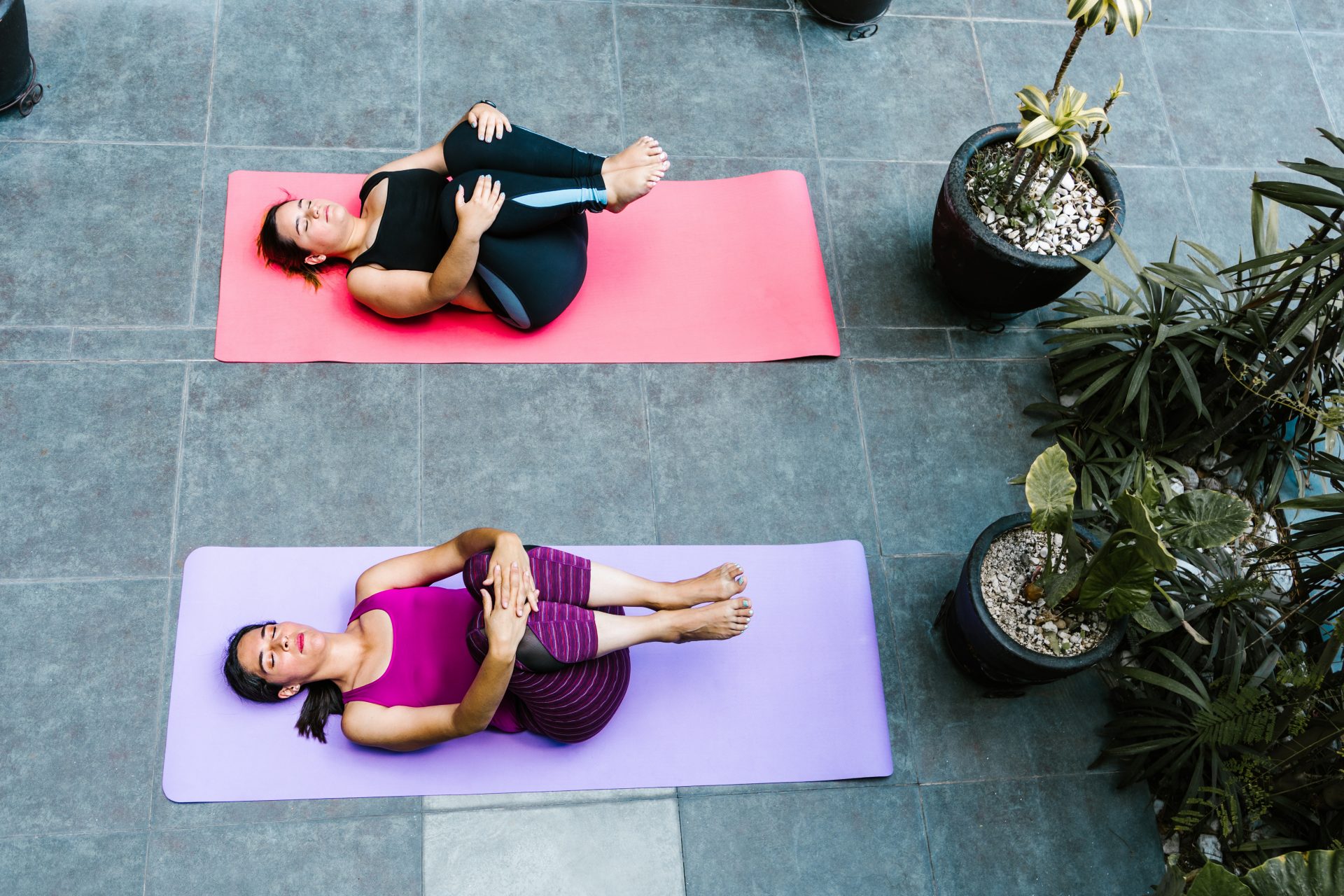The trapped wind position is a yoga stretch to help expel gas — but how does it work?
There’s nothing quite like reaching into a yoga pose that immediately stretches the pain away. Whether it’s child’s pose when your back is aching or a calming cactus for tight shoulders, there’s something powerful about taking the time to slide your body into an asana.
There’s one pose that I’ve long relied on for that same satisfaction, but for a slightly more embarrassing problem. I can’t remember when or why I first discovered it, but I do know that whenever I complained about stomach pains – particularly of the gassy variety – my mum would tell me to get on the floor and into the ‘trapped wind position’. And it usually worked. Now, it’s a remedy I prescribe to my friends or colleagues when they complain about feeling bloated, but how does it really work?
You may also like
“Does doing yoga actually improve your sleep?” A sleep expert answers your questions
What is the trapped wind position?
The trapped wind position is actually an ancient yoga pose called pawanmuktasana. “This Sanskrit name actually translates to wind removing pose, and it’s long been associated with easing gas and air in the stomach,” says yoga teacher Francesca Hunt.
To do the move, you lie on your back and bring your knees into your chest – one at a time or both together – and hug them tight while slowly and gently rocking from side to side.
“The compression of the legs into the stomach massages the colon to encourage air to be expelled out of the digestive system,” Hunt explains. And there’s science behind the idea of a stomach massage. The NHS advises them to help movement in the gut, particularly to treat constipation, saying it promotes contractions of the large intestine which moves faecal matter along the digestive tract. While it recommends this is done with your hands, pawanmuktasana offers the same compression but in a gentler way.

As well as the physiological reasons behind why pawanmuktasana works, there are more reasons why yoga helps digestion. The gut is hugely influenced by stress, and gas and bloating are often the results of our too-fast lifestyles – when we eat too fast at our desk we tend to swallow air, which leads to us feeling gassy, or we don’t allow our food time to digest before running to meetings or social events.
“Getting into poses like pawanmuktasana simply helps to slow your mind and body which is needed to relax the gut. And there’s also the impact of psychologically knowing you’re in a safe space where you are allowed to pass the gas that has a positive effect,” says Hunt.
Studies also show that yoga works to help long-term gut health rather than just as a cure for when the gas is trapped. In a study published in the Psychophysiological Biofeedback journal, people with IBS who performed 12 yoga poses (including pawanmuktasana) had just as significant a decrease in their bowel symptoms and anxiety as those who took Westernmedication.
In the paper, researchers said that yoga poses can lead to pressure changes in organs such as the bladder, colon, stomach and lungs which stimulate neural, visceral and emotional activity in the nervous system and can correct the ‘dysmotility’ of the gut in IBS.
You may also like
Move of the week: single leg knee to chest stretches work the hips while improving gut health
As I’ve got older, I’ve come to realise that yoga should be a prevention rather than a cure. I’m likely to find myself in the trapped wind position more regularly during times of high stress, when I’m not taking the time to care for my body and mind.
“I feel quite strongly about yoga being preventative and that it’s something that should be incorporated every few days. Just a little sequence, especially when you’re going through stress or are at a painful point in your cycle, can really help,” agrees Hunt. But when I need a quick cure, pawanmuktasana’s massaging effects really do help.
How to do pawanmuktasana for gut health
- Lie on your yoga mat with your chin tucked towards your chest, arms flat and tailbone tucked
- Slowly lift one leg in towards the chest and hold it there with your arm. Move the leg gently to find a spot that feels natural and soothing
- Bring the other leg in towards the shoulder and hold it with the arm. Again, move the leg to find a comfortable spot. Rock from side to side squeezing both legs to the chest
- Hold for five to six breaths, then release to savasana
- Repeat as many times as needed
Images: Getty
Source: Read Full Article
